This story about the Australian Army’s Tiger helicopter first appeared in the June 2019 edition of Australian Aviation.
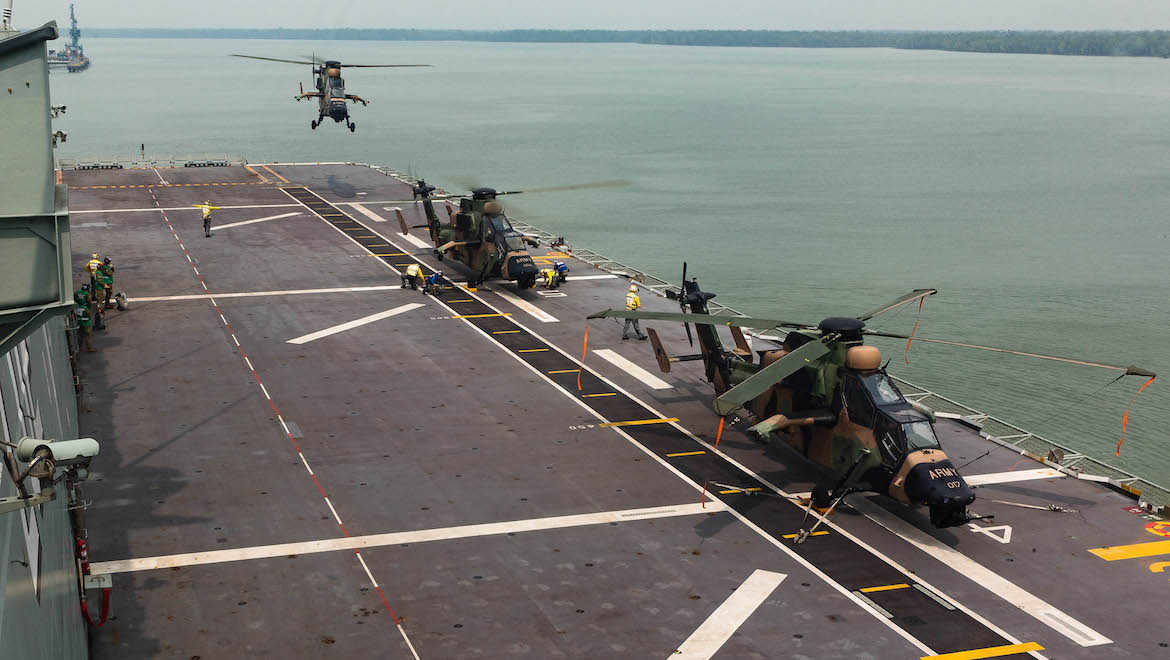
HMAS Canberra. (Defence)
After protracted development and a troubled service entry, the Australian Army’s Airbus EC 665 Tiger Armed Reconnaissance Helicopter (ARH) has only recently started hitting its straps and providing its promised capability – one which has been nearly two decades in the making.
Selected in December 2001 to fulfil Army’s AIR 87 requirement under a then $1.1bn acquisition contract, the first two Tigers were accepted by the Commonwealth in December 2004 with the last of 22 aircraft delivered in late 2011.
The first four Tigers were manufactured by (then) Eurocopter at the company’s Marignane factory in southern France, while the remaining 18 were assembled at the company’s Pinkenba facility at Brisbane Airport.
Much has been written about the delays and capability shortfalls experienced by the ARH program, with developmental issues, groundings, spares shortages and sustainment gaps, as well as capability and performance shortfalls variously attributed to the program, some of which will be described below.
Current capability
The Australian Army currently operates two squadrons – 161 and 162 – each of eight aircraft with the 1st Aviation Brigade (1Avn) at the Robertson Barracks in Darwin, and a training detachment of four aircraft based at
Oakey in southern Queensland.
In addition, one instrumented aircraft is assigned to Oakey for development work and to supplement the training
fleet, and an additional aircraft is assigned to 1Avn to cover deep maintenance.
In April 2016 the Tiger ARH finally achieved a full operational capability (FOC), some seven years later than planned.
But a 2016 Australian National Audit Office (ANAO) report found the FOC milestone lacked definition, due in part to Army amending its Acceptance into Operational Service Plan to accommodate nine caveats.
These include the aircraft’s lower than expected rate-of-effort and delays to its Canberra class LHD integration, as well as its EW self-protection system, IFF, datalinks, and mission planning system, all of which were still considered developmental or incompatible with other ADF systems.
The ANAO report also found that the helicopter continued to suffer from lower than expected serviceability rates, and that it faced growing obsolescence issues.
Interestingly, the ANAO report referred to a 2013 report by Defence’s Rapid Prototyping, Development and Evaluation (RPDE) organisation which found that upgrading the Tiger was a “high-risk activity” and that replacement alternatives should be considered.
One of the key recommendations of the ANAO report was “that Defence assesses, and advises government, on the value-for-money in investing further in the Tiger aircraft fleet for only a short period of improved performance, against other alternatives”.
Further, the report said this assessment should take into account the associated technical risks of upgrading an aircraft which has not fully delivered the level of capability originally expected by government.
“The 2016 Defence White Paper allocated $500-750 million to address the current capability requirements of the Tiger platform with a view to replacing the platform mid next decade, at a cost of some $5-6 billion,” the ANAO report noted.
“In effect, an upgrade is scheduled for consideration less than 12 months after the Tiger achieved final operational capability. Defence should conduct a thorough analysis of the value-for-money of investing further in the Tiger, pending the introduction of a replacement capability.”
In response to the ANAO’s recommendation, which it accepted, Defence said it would “assess the best value for money and most effective capability for both the Tiger CAP and Tiger replacement. Recommendations on the timings for both programs will be considered at Gate Zero”.
Despite the aircraft’s disappointing development delays and sustainment system, its operators view the platform, including its handling qualities and overall capabilities, very favourably. Despite having never been operationally deployed, unlike its French and German counterparts, the Australian ARH Tiger fleet leads the global fleet in its systems maturity and flight hours.
In July 2018, then Commander of Army’s 16th Aviation Brigade BRIG Steve Jobson wrote that he considered the Tiger a “truly world-class platform”.
“We have driven health into our Tiger organisations, with improved facilities, maintenance processes, reorganised workforce and collaborative operations,” he said.
“Our Tiger pilots now fly more than their peers overseas. Our Tigers deliver precision lethal effects in training to more soldiers of more battalions and regiments of our own and other friendly nations Army’s and Marine forces than ever before.
“Our Tigers now deliver reliability and performance that is the envy of the world: Proven reliability. Proven performance. No more conjecture. No more wishing. It’s happening.”
This is high praise indeed, particularly in light of the adverse ANAO findings from just two years previously.
“This is no longer the system we acquired,” he added. “It is now modernised with next generation weapons, digitised connectivity, revolutionary tactics with unmanned aerial vehicles, and interoperability with the Royal Australian Navy, Royal Australian Air Force and our allies.
“The Tiger no longer just delivers tactical transactions. It has pulled the entire Army aviation capability into delivering theatre enabling, network centric, joint effects for the Joint Force Commander. Our reach and versatility now extends across all domains and components in ways you can only imagine.”
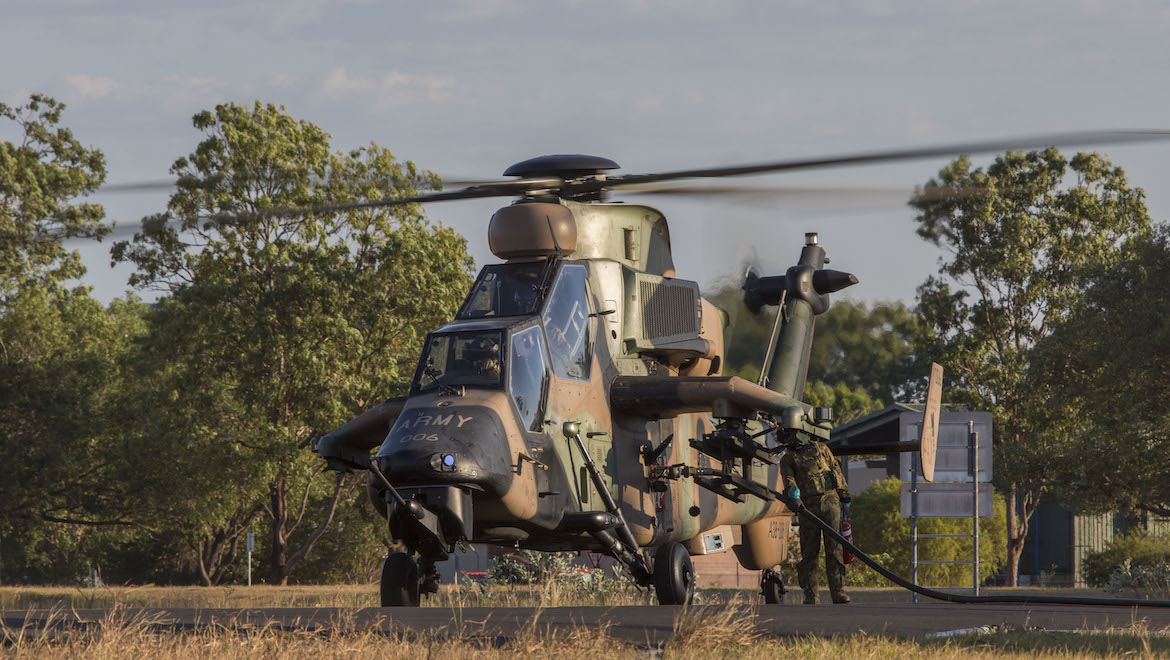
Whether BRIG Jobson was pushing the case to retain the Tiger beyond the 2025 timeframe, or whether he just wanted to publicly reassure the rest of the ADF that Tiger will retain a relevant capability right up until that time, is unclear. Unfortunately now this is largely irrelevant, as it appears the Tiger’s fate has been sealed.
When asked on the sidelines of the 2019 Avalon Airshow about these positive statements and the encouraging direction in which the Tiger capability had been heading in recent years, Army’s Director General Aviation BRIG John Fenwick told Australian Aviation: “The White Paper is very clear, we need to start preparing to replace the aircraft in the mid 2025s.”
“Clearly, we are still watching the platform very closely and we are seeing improvements in it,” BRIG Fenwick said. “But at the end of the day, government has given us very clear direction – we need to manage the aircraft to its full potential to 2025. So really our opinion is a moot point, it’s all about government direction. Now, if government tells us to change direction, we will comply accordingly.”
So, under current Defence planning, the Tiger is due to be upgraded under the $500-750m LAND 9000 Armed Reconnaissance Helicopter Capability Assurance Program (ARH CAP) which will see the various obsolescence issues managed until the mid-2020s, after which the capability will be replaced.
This is a significant watering down of the previous $1-2bn AIR 87 Phase 3 ARH CAP plan which had envisaged capability and performance enhancements, and life extension measures for a projected life-of-type into the 2030s.
A couple of immediate items to be addressed under ARH CAP is the addition of newer Collins ARC-210 radios to replace older systems which will soon no longer be supported and to better integrate with ADF and allied systems, and the replacement of the aircraft’s fuel tanks which have suffered from corrosion.
In the meantime, Army has addressed several of the FOC caveats, including the communications and IFF issues, and the adoption of a suitable EWSP system. In addition, after a second round of First of Class trials late last year and a successful deployment in April 2019 of four aircraft to Malaysia to join the LHD HMAS Canberra for the second half of the ADF’s Indo-Pacific Endeavour 2019 activity, the aircraft has been cleared to support amphibious and maritime operations from these vessels.
Later this year, two aircraft are scheduled to be deployed to the US Navy’s electronic warfare training range at Yuma in Arizona to participate in Marine Aviation Weapons and Tactics (MAWTS) program to help develop a baseline for the aircraft’s electronic warfare system against high fidelity threat systems.
The US Marine Corps’ MAWTS-1 is a unit dedicated to the development of aviation tactics, and has an electronic warfare Spectrum Warfare Department to fold EW into the Marines’ biannual Weapons and Tactics Instructor course.
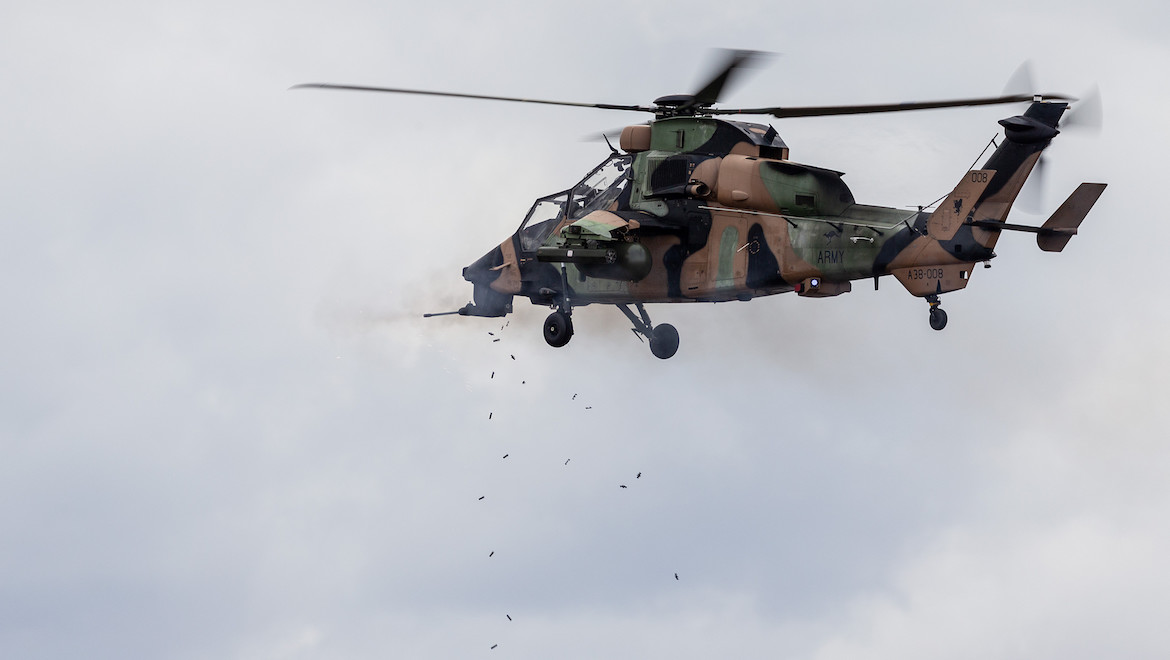
ARH upgrade
Despite a comprehensive upgrade of the Tiger seemingly now off the table following the ANAO report and subsequent IIP language, Airbus has continued to develop the aircraft and has proposed a number of capability and performance enhancements for the machine.
The company is currently implementing Tiger Mark II upgrades for the French Army’s HAP Tiger, the version most common to Australia’s ARH variant. The Mark II will see the addition of new Thales-developed laser-guided rockets, as well as upgrades to the helicopter’s GPS receiver and CRPA antenna system.
Meanwhile, the more comprehensive Mark III upgrade program was launched through the European Organisation Conjointe de Coopération en matière d’Armement (Organisation for Joint Armament Co-operation, or OCCAR) with Tiger operator member nations France, Germany and Spain. OCCAR had tried throughout 2016 to get a commitment from Australia to join the Mark III development effort, but this has seemingly been in vain.
While the definition of the Mark III upgrade is yet to be finalised, the program is working with Thales and MDBA to enhance the Tiger’s avionics and mission systems, and to develop a new common air-to-surface missile to replace the current Hellfire and Spike missiles.
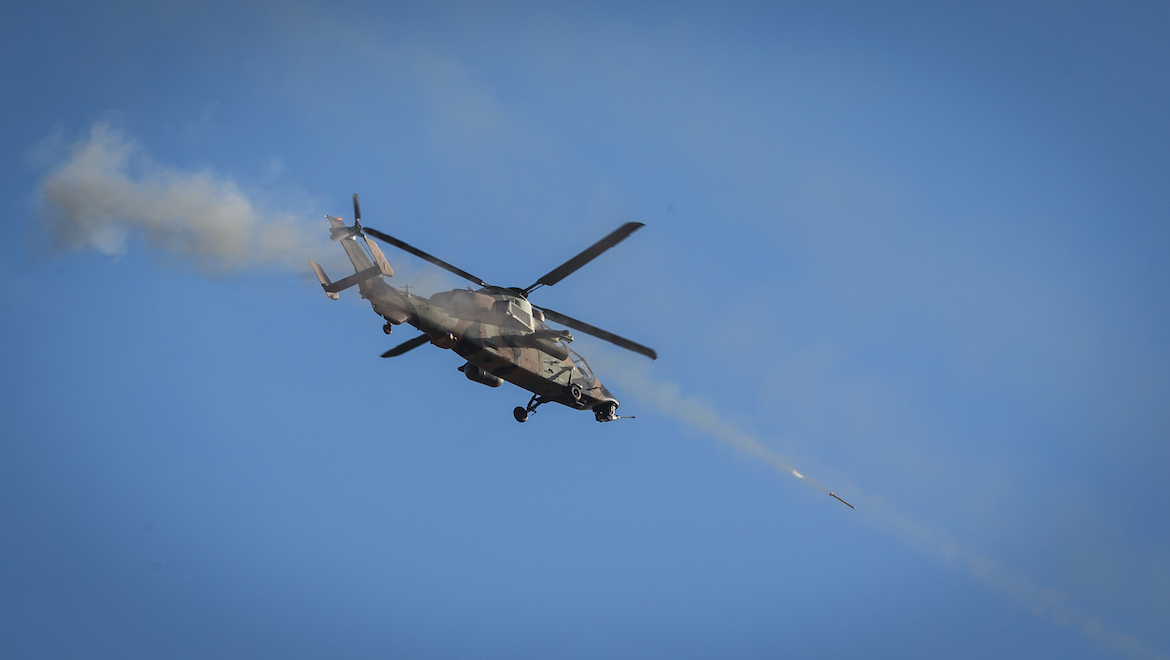
Possible replacements
Without wanting to pre-empt any replacement decisions, the ANAO quoted the RPDE report as saying: “Alternate platform options should be considered. One option is the [Apache], although it is acknowledged that there may be other cost competitive platforms.”
The ANAO report then notes that in 2013 the then Defence Material Organisation (DMO – now CASG) advised the then Defence Minister that while “no in-depth analysis of the costs of acquiring the Apache had been undertaken since the initial tender process for AIR 87 Phase 2 in 2001; [and that] the figures identified in the 2013 [RPDE] report were ‘not considered reliable’; . . . that further analysis would be undertaken to develop options in the lead up to Gate Zero for the Tiger mid-life upgrade”.
Regardless of that analysis, a like-for-like replacement of the Tiger by another attack or armed reconnaissance helicopter may not be the end result of Defence’s deliberations, with the IIP proposing that “Defence will invest in a future armed reconnaissance capability to replace the Tiger, which could include manned or unmanned systems or a combination of both, to be introduced from the mid-2020s”.
If Defence is looking at replacing the Tiger with another manned helicopter, there are really only two options available which would provide a similar capability while addressing many of the identified interoperable deficiencies experienced with Tiger, these being the Boeing AH-64E Apache Guardian, and the Bell AH-1Z Zulu Cobra, or “Viper”.
Both of these aircraft are the latest developments of very mature systems, with many hundreds of each type in service with the US and other allied nations, including in our immediate region.
The latest AH-64E Apache Guardian is currently being manufactured as new-build airframes for international customers, and remanufactured from AH-64Ds for the US Army. Originally designed as a heavy attack helicopter to defeat Soviet heavy armour in Europe, the Apache’s latest iteration adds improved endurance, interoperability with unmanned systems, and the ability to engage maritime targets.
AH-64E development started in 2012, and adds more powerful GE T700-GE-701D turboshafts and an upgraded transmission, and new composite blades that provide a top speed of about 170kts and nearly 50 per cent greater
endurance than the AH-64D.
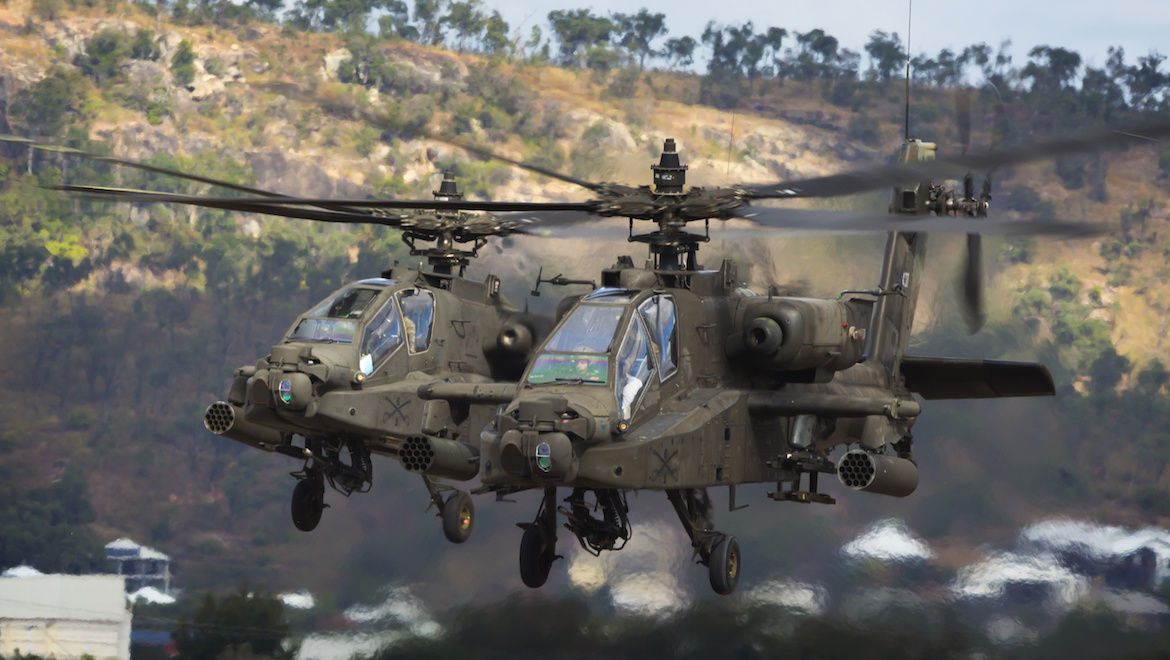
Other improvements include longer-stroke hydraulic shock strut landing gear for improved crash-worthiness, and a manned-unmanned teaming (MUM-T) system datalink enabling which allows the AH-64E’s co-pilot to remotely control and receive data from unmanned systems such as the US Army’s MQ-1C Grey Eagle, a development of the MQ-1A Predator.
There are also enhanced fire-control systems with maritime modes to identify and target vessels at sea or in the littorals, Link-16 datalinks, and a new ground-fire acquisition system which can identify muzzle flashes from small arms, cannons and rocket-propelled grenades, and automatically direct return fire from the aircraft’s onboard 30mm cannon.
Boeing is also working on an advanced development of the AH-64E which will have wider span stub wings and a compound “pusher” tail rotor. The concept emerged amid ongoing delays to the US Army’s Future Vertical Lift plan and a requirement to keep the AH-64 capable well into the 2030s and possibly beyond the type’s current planned withdrawal by 2040.
Dubbed the AH-64E Block 2 Compound, the development features enlarged and permanently attached wings, a new engine exhaust arrangement, a larger vertical tail fin, and a rear-mounted “pusher” propeller, all of which are designed to give the Apache greater speed and range compared to conventional models.
Boeing estimates the Compound development will provide 50 per cent more speed. Concept testing was due to have been completed earlier this year and, if successful, Boeing is expected to pitch it as an alternative to more radical designs for the US Army’s Future Attack Reconnaissance Aircraft (FARA) competitive program.
The Bell AH-1Z lineage dates right back to the mid-1960s when the company adapted the familiar UH-1D Huey’s driveline and dynamic components to a lighter and slimmer tandem fuselage with stub wings to provide dedicated airborne fire-support to troops in Vietnam.
Many iterations later, the AH-1Z still shares the dynamic components of the Huey, albeit in its latest UH-1Y Yankee form, both of which were developed in the late 90s for the US Marine Corps initially as upgrades to in-service AH-1W and UH-1N aircraft, but ultimately as new-build aircraft.
The AH-1Z features a four-bladed composite rotor system and upgraded transmission, a four-bladed tail rotor, upgraded landing skids and a new fully-integrated glass cockpit, and shares 85 per cent systems commonality with the UH-1Y.
Viper crew members use the same Thales Top Owl helmet-mounted sight and display system as used in the Australian Army’s MHR 90 transport helo.
The helicopter itself has a fully-marinised airframe and dynamic components for maritime operations, and features greater survivability through the adoption of a hover infrared suppression system (HIRSS) to mask the engine exhaust, countermeasures dispensers, radar warning receivers (RWRs), incoming/on-way missile warning, and on-fuselage laser spot warning systems.
The AH-1Z also features a Lockheed Martin target sight system (TSS) with a FLIR sensor for targeting in day, night and adverse weather conditions. Weapons include precision-guided APKWS and Hellfire missiles, and an integral 20mm cannon.
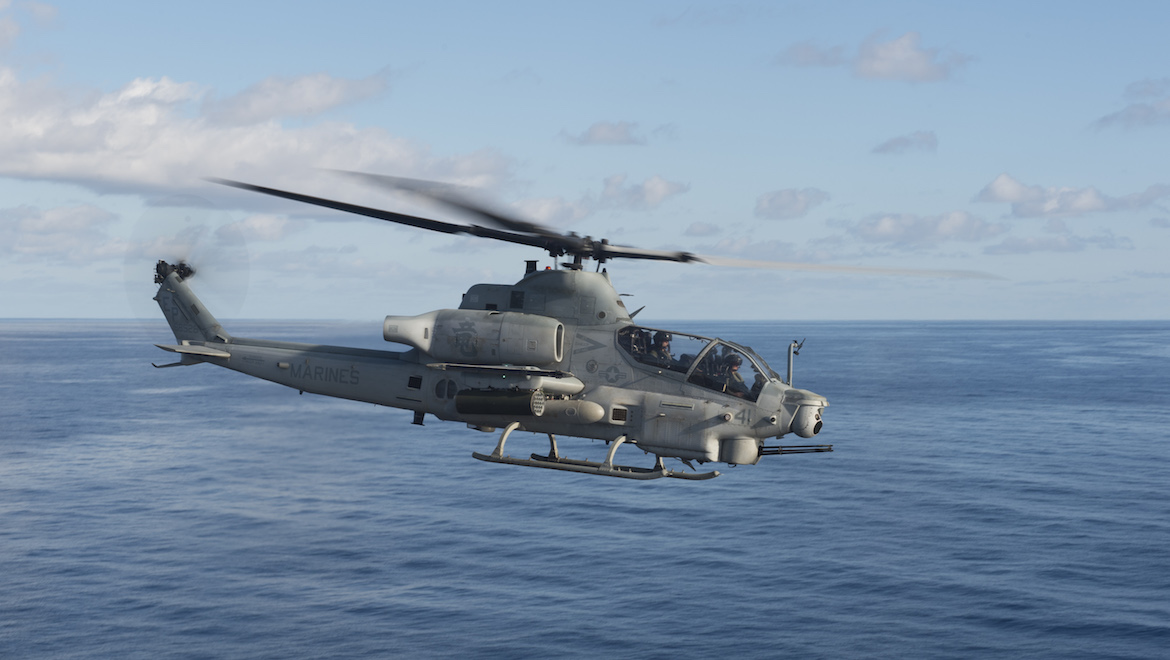
Opportunities for innovation
Both the AH-64E and the AH-1Z are proven and available now, but it is possible both platforms will no longer be in production by the planned 2025 Tiger replacement timeframe unless additional US or international orders are received.
If this is the case, Defence may be forced to widen its search for a replacement to include new generation systems that are under development for the US Army’s FARA competitive program, an element of the service’s all-encompassing Future Vertical Lift (FVL) program designed to replace the Bell OH-58D Kiowa Warrior armed scout helicopter which was retired in 2017.
In late April the US Army Combat Capabilities Development Command Aviation & Missile Center’s Aviation Development Directorate advised that the FARA program was tracking a few months ahead of schedule, and that prototype agreements had been reached with industry.
The five agreements were awarded to a teaming of AVX Aircraft Co and L3 Communications Integrated Systems with a derivative of AVX’s Joint Multi-Role (JMR) aircraft; Bell Helicopter with its conventional 525 Relentless; Sikorsky with its S-97 Raider; Boeing with an as-yet undeclared contender but thought to be the AH-64E Block 2 Compound; and Karem Aircraft with a mystery design.
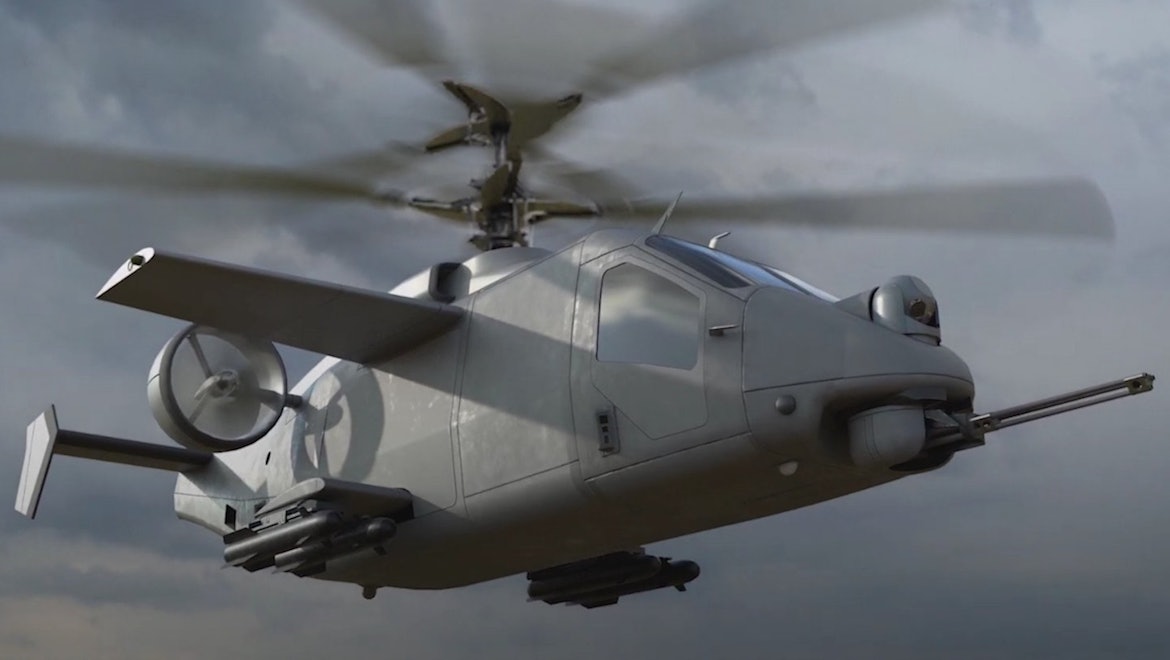
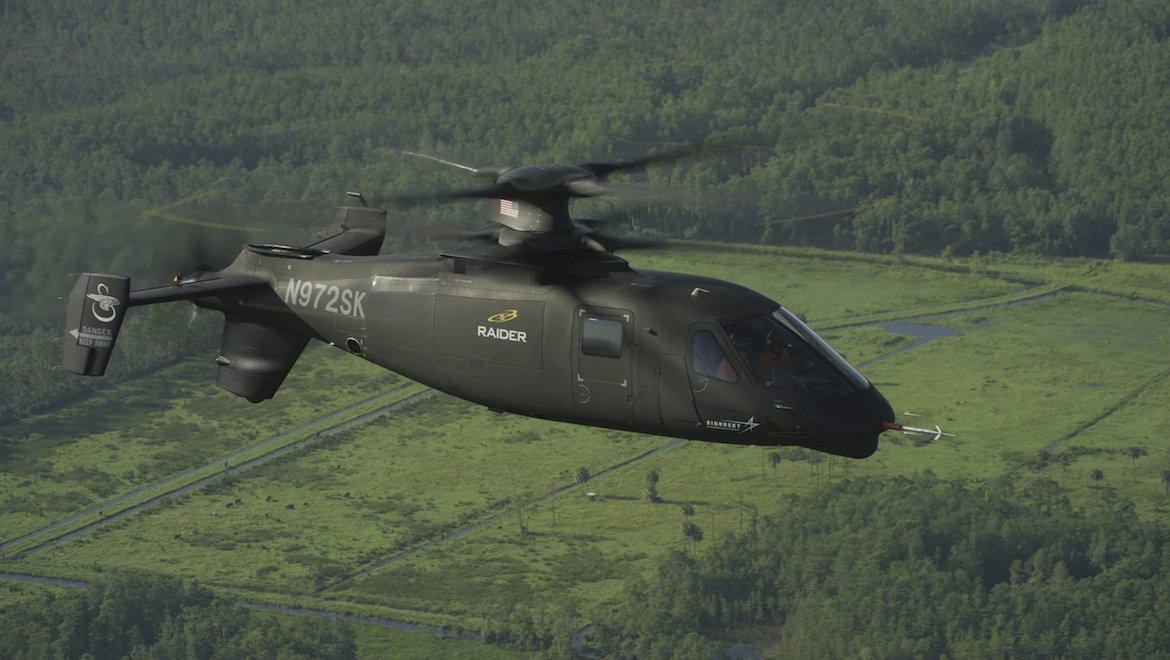
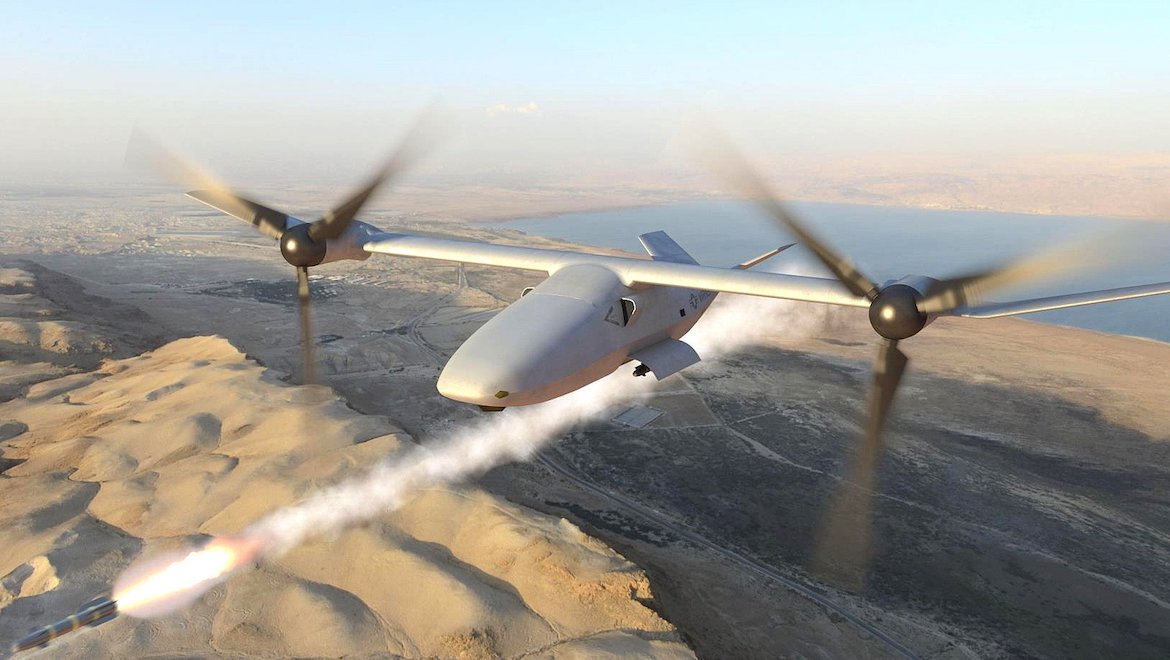
The US Army plans to have FARA prototypes flying in 2023, and to make a production decision in 2028, although this seems to be overly ambitious for such developmental systems.
The US Marine Corps is running a similar program, the Marine Air-Ground Task Force (MAGTF) Unmanned Aerial System (UAS) Expeditionary, or MUX. Designed to support manned aircraft such as the V-22 Osprey, the MUX will likely be unmanned, and will have an endurance of up to eight hours and a maximum speed well above 200kts.
The USMC aims to issue a request for information to industry early next year, with the ambition of trialling operational capability as early as 2026. Possible contenders for MUX include the Bell V-247 Vigilant concept which resembles a slightly smaller and sleeker V-22 tiltrotor, and the Northrop Grumman/DARPA Tactically Exploited Reconnaissance Node (TERN) tail-sitter concept.
While MUX on paper appears to far exceed the ARH specifications of the Tiger and other manned helicopters, it provides significant capability and flexibility that manned aircraft cannot match now or in the near future.
Like FARA, MUX is likely to be at least a decade or more away from entering service, let alone being available for export. Thus there is a potentially a six or more year gap where no dedicated manned armed reconnaissance or attack platform of US origin is available to the ADF if the 2025 Tiger retirement date is adhered to.
But such a scenario may bring the opportunity for another potentially innovative solution into play, one that may provide some aircraft and/or systems commonality benefits to the ADF.
Army currently has another manned aviation program underway – the LAND 2097 Phase 4 light special forces support helicopter which is planned to enter service shortly before the planned Tiger replacement.
It says it requires at least 16 helicopters for urban special forces (SF) operations, four of which can be deployed at a time rapidly via RAAF C-17A transport, and made ready to fly within 30 minutes. The new helicopter will complement the larger machines currently operated by Army’s 6 Aviation Regiment (6Avn) at Holsworthy in Sydney, which is currently transitioning from the S-70A-9 Black Hawk to the Airbus MRH 90 Taipan.
Several of the likely LAND 2097/4 contenders – Bell with its 407GX/GT or 429, Airbus with the H145M, and Boeing with its AH-6i Little Bird – offer armed versions of these aircraft with missionised systems, high performance sensors, and stub wings or pylons with forward-firing precision guided weapons.
While a military derivative of a commercial platform obviously wouldn’t offer the same levels of performance, survivability and capability as a dedicated ARH or attack helicopter, a Tiger replacement based on the successful SF support helicopter could offer massive operational savings and flexibility to the ADF, with little risk.
The other option for Army to consider is to revert to its original plan to upgrade the Tiger’s systems beyond just addressing obsolescence issues so it can continue in service until a more capable replacement such as the successful FARA or MUX program solution is available and has matured sufficiently for export.
VIDEO: A look at the Tiger at the Indo-Pacific Endeavour 2019 exercises from the Australian Army’s YouTube channel.
This story first appeared in the June 2019 edition of Australian Aviation. To reach more stories like this, become a member here.












